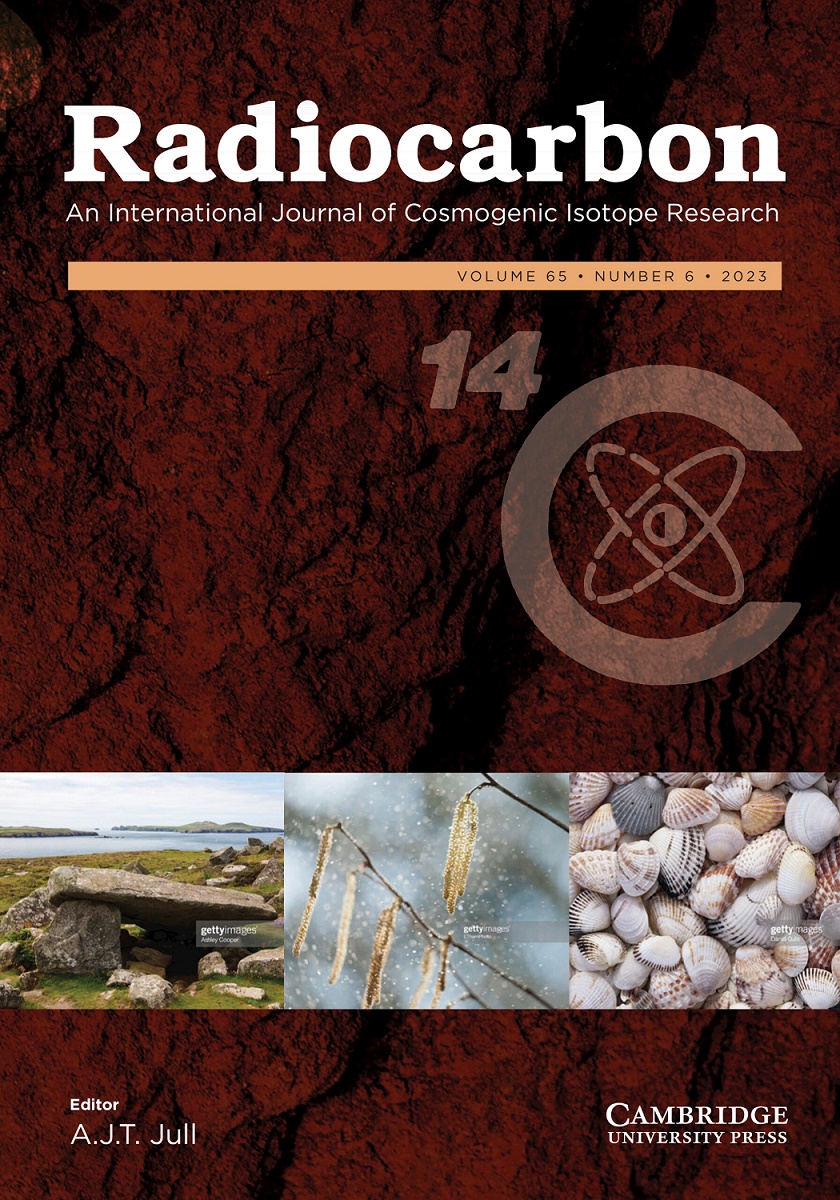直接氯仿萃取法测定土壤微生物生物量的放射性碳分析
IF 1.3
3区 地球科学
Q2 GEOCHEMISTRY & GEOPHYSICS
引用次数: 0
摘要
微生物对土壤有机质的处理是碳循环的重要驱动因素,但我们对这一大型陆地碳库的周转方式缺乏了解。在某种程度上,这是由于有限的选择,以准确确定C的来源被微生物群落同化。实验室孵育是最常用的方法;然而,由于样品的破坏和处理,它们可能会引入伪影,并且可能需要数月才能产生足够的二氧化碳进行分析。我们提出了一种生物质提取方法,该方法允许对微生物生物分子进行直接的14c分析,并将结果与实验室培养进行比较。在50 cm以上的土壤深度,从培养中提取的Δ 14c与提取的微生物生物量无法区分。在50 cm以下,生物量的Δ 14 C比孵育的消耗更多,这可能是由于孵育中刺激了不稳定的C分解,在生物量提取中包含了来自非活细胞的生物分子,或者用于同化和呼吸的C的差异。我们的研究结果表明,测量微生物生物量提取物的Δ 14 C可以成为土壤培养的有用替代方法。本文章由计算机程序翻译,如有差异,请以英文原文为准。
RADIOCARBON ANALYSIS OF SOIL MICROBIAL BIOMASS VIA DIRECT CHLOROFORM EXTRACTION
ABSTRACT Microbial processing of soil organic matter is a significant driver of C cycling, yet we lack an understanding of what shapes the turnover of this large terrestrial pool. In part, this is due to limited options for accurately identifying the source of C assimilated by microbial communities. Laboratory incubations are the most common method for this; however, they can introduce artifacts due to sample disruption and processing and can take months to produce sufficient CO 2 for analysis. We present a biomass extraction method which allows for the direct 14 C analysis of microbial biomolecules and compare the results to laboratory incubations. In the upper 50 cm soil depths, the Δ 14 C from incubations was indistinguishable from that of extracted microbial biomass. Below 50 cm, the Δ 14 C of the biomass was more depleted than that of the incubations, either due to the stimulation of labile C decomposition in the incubations, the inclusion of biomolecules from non-living cells in the biomass extractions, or differences in C used for assimilation versus respiration. Our results suggest that measurement of Δ 14 C of microbial biomass extracts can be a useful alternative to soil incubations.
求助全文
通过发布文献求助,成功后即可免费获取论文全文。
去求助
来源期刊

Radiocarbon
地学-地球化学与地球物理
CiteScore
16.20
自引率
6.00%
发文量
85
审稿时长
6-12 weeks
期刊介绍:
Radiocarbon serves as the leading international journal for technical and interpretive articles, date lists, and advancements in 14C and other radioisotopes relevant to archaeological, geophysical, oceanographic, and related dating methods. Established in 1959, it has published numerous seminal works and hosts the triennial International Radiocarbon Conference proceedings. The journal also features occasional special issues. Submissions encompass regular articles such as research reports, technical descriptions, and date lists, along with comments, letters to the editor, book reviews, and laboratory lists.
 求助内容:
求助内容: 应助结果提醒方式:
应助结果提醒方式:


